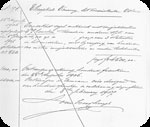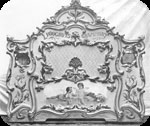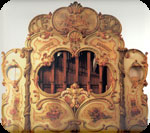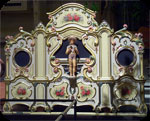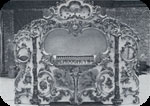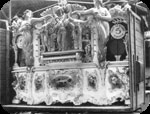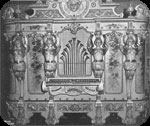 |
| Home
The organs
|
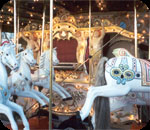 |
 |
 |
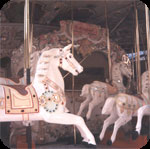 |
|||
This
rarely seen LH320 is also owned by the Rorive family. The sound
of this organ is rather ‘sweet', and can be compared with that
of the Becquart Hooghuys. According to the invoice for this instrument,
the façade used was taken from an older instrument. |
LH500, originally
built for the carousel salon of Gerard Vincken in Roermond (NL),
here with a later owner: Gerrit van der Wouden. Later, the organ
was sold to England, where it can stil be found. It is striking that on this photo the name Charles can be read: Louis' son probably did some maintenance work to the organ and then placed his name on the façade (and inside …). |
72-key LH518 "Senior", famous through various gramophone records.
This instrument was originally a Gavioli barrel organ. |
70-key LH590
in the carousel of the Rorive family. This organ is still being
used on the fair and has an enormous repertoire. |
 |
 |
 |
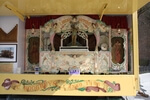 |
|||||
The
left picture is a factory photo of LH522. The scale of this organ
is actually the same as that of LH518, apart from some details:
LH518 does not have a Glockenspiel (anymore), while LH522 had no
hautbois for a long time. On the second photo, the organ is in
a bicycle ride. The third photo shows the organ in the workshop
of Albert Becquart, who sold the organ to Victor Vroman, who started
to use it in his carousel in 1958. The original façade of LH522 ended up in front of LH518. The main reason for this was the fact that the façade didn't fit into Vroman's carousel. Victor first sawed a part off the façade but this was apparently no the right solution. Therefore, he designed a façade himself, using a.o. parts of a Bursens dance organ. The original façade passed into the hands of Romain Charles Hooghuys (except for the top piece, which is still to be found in the collection of Norbert Vroman), who placed it in front of the “Senior”. Since 2004, the carousel of Norbert Vroman is no longer travelling the fairs but the ride and organ are still in excellent condition. |
||||||||
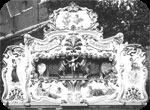 |
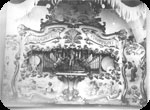 |
 |
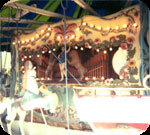 |
|||||
A truly special series of organs! At the left, there is a factory
photo of a large fair organ (ca.80 keys) with a magnificent façade.
Hooghuys built at least four organs with similar façades: LH525,
LH547, LH552 and LH555. On all organs there was a group of figures
consisting of a central male or female figure flanked by horses. |
||||||||

